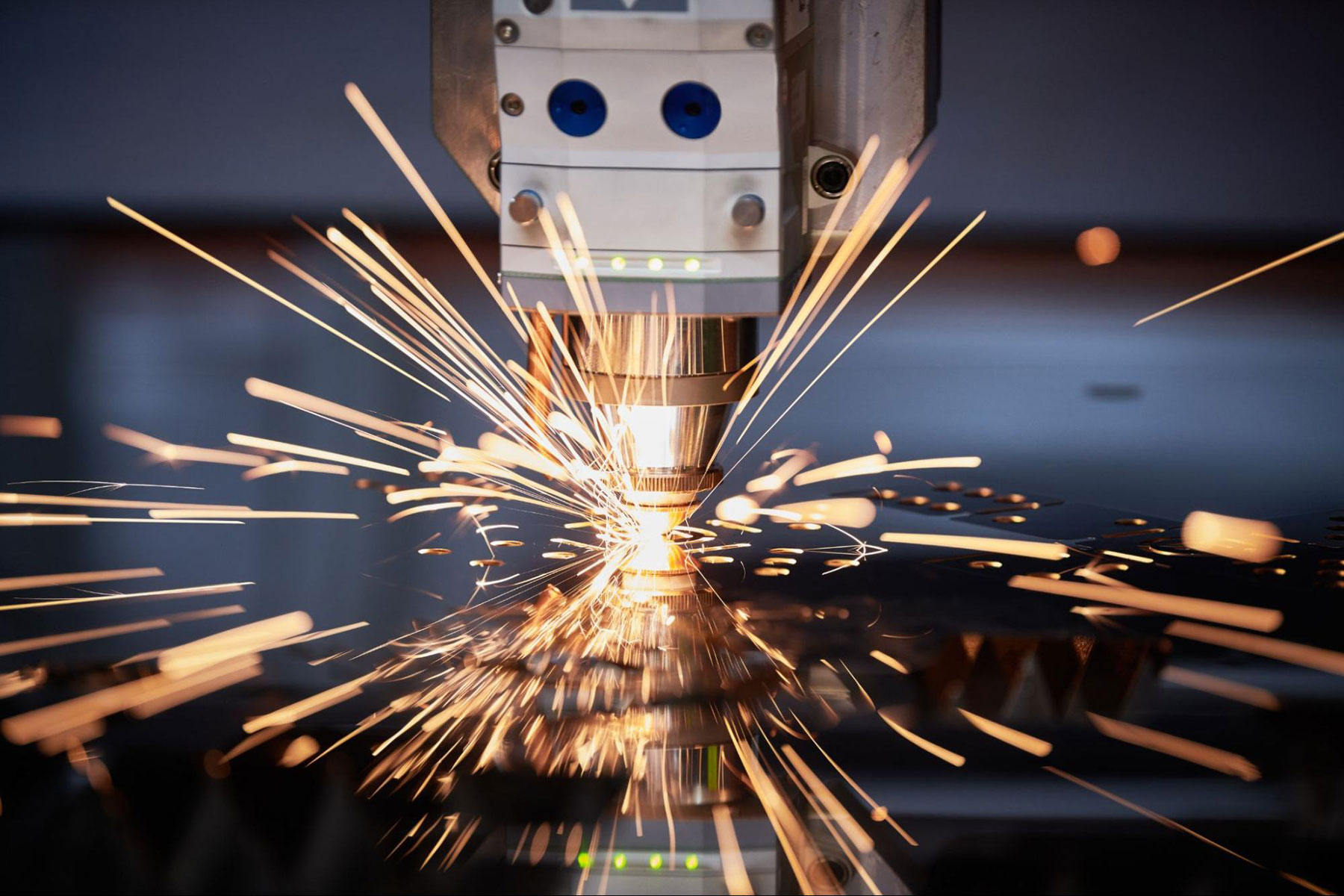In metal fabrication, precision, speed, and efficiency are essential. Among the technologies driving this evolution, laser-cutting machines stand out as game-changers. These sophisticated devices have transformed how industries approach metal cutting, shaping, and manufacturing. But how do laser-cutting machines operate? In this article, we’ll talk about the science behind the laser, their diverse applications, and why they are indispensable in modern metal fabrication.
How do laser-cutting machines operate?
Laser-cutting machines utilize a high-powered laser beam to cut metal with perfect precision. The process begins with the laser beam directed at the metal surface. The energy from the beam heats the metal to its melting point, and a focused stream of gas—often nitrogen, oxygen, or CO2—blows the molten material away, creating a clean cut.
These machines operate with two primary types of laser cutting: CO2 lasers and fiber lasers. CO2 lasers are excellent for cutting, boring, and engraving various materials, including metals, wood, and acrylics. Fiber lasers, on the other hand, are more efficient for cutting metals due to their higher power output and energy efficiency.
The cutting head moves in a pre-programmed path guided by CNC (Computer Numerical Control) technology. This ensures that each cut is precise and consistent, following the digital design specifications with minimal error. The result is intricate shapes and designs that would be challenging or impossible to achieve with traditional cutting tools.
How is the laser made?
The formation of a laser beam in cutting machines is a sophisticated process rooted in the principles of stimulated emission. A laser (Light Amplification by Stimulated Emission of Radiation) generates a coherent light beam by exciting atoms or molecules within a medium (such as CO2 gas or optical fibers doped with rare-earth elements).
Here’s a simplified breakdown of the laser generation process:
Energy Source
The laser medium is pumped with energy, typically through electrical discharge or flash lamps.
Excitation
The energy excites the atoms or molecules in the medium, raising them to a higher energy state.
Stimulated Emission
When these excited atoms or molecules return to their lower energy state, they emit photons (light particles). These photons stimulate other excited atoms to emit more photons of the same wavelength and phase.
Amplification
The emitted photons are reflected back and forth between mirrors placed at both ends of the laser medium, amplifying the light as it passes through the medium repeatedly.
Beam Formation
One of the mirrors is partially transparent, allowing the amplified light to escape as a concentrated, high-energy laser beam.
This high-energy beam is then directed through optics and focused onto the material to be cut, achieving precision cuts and shapes with minimal material waste.
Laser Machine Services at General Steel Warehouse
Laser-cutting machines have revolutionized metal fabrication, offering unmatched precision, speed, and efficiency. Their ability to handle complex designs and deliver consistent results has made them an essential tool in numerous industries. As technology continues to advance, the capabilities and applications of laser cutting machines are expected to expand even further, opening up new possibilities in manufacturing and design.
Explore General Steel Warehouse’s state-of-the-art fiber laser-cutting services and discover how they can revolutionize your operations. Contact us today for a consultation and take the first step towards precision, efficiency, and innovation in metal fabrication.
